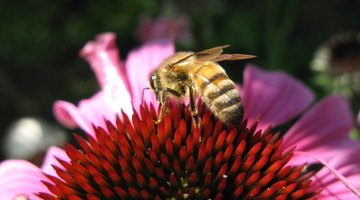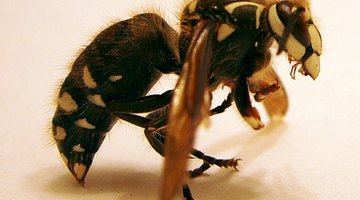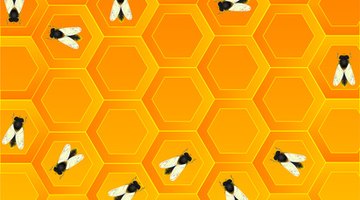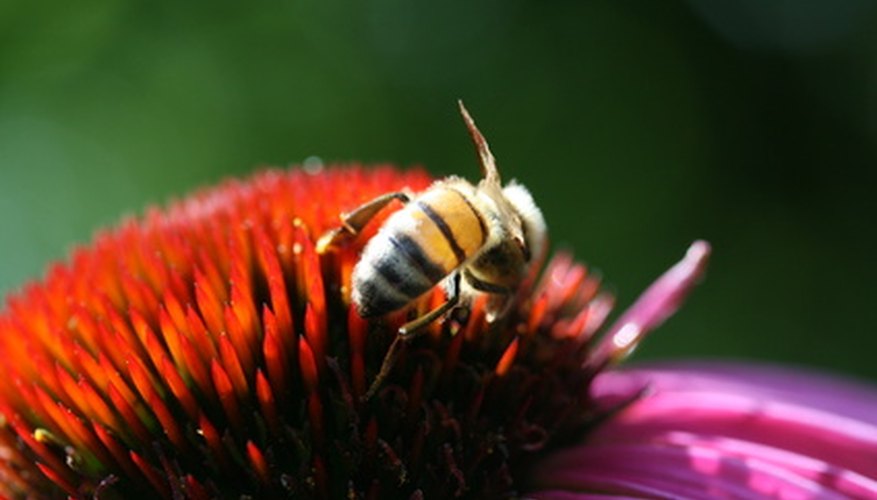Like every animal, a honey bee has several different kinds of adaptations that help it to stay alive and perpetuate its species. A honey bee has structural and behavioural adaptations that protect itself and its relatives from danger. Some of the adaptations include its colour, stinger and an ability to learn.
Body colouring

One of the honey bee's main adaptations consist of its yellow stripes and black body. These colours help the honey bee to blend in with the colours of flowers, which is helpful during pollination. The honey bee is protected from predators and attracted to flowers that may have some of the same hues as its own body. Honey bees often live near flowers and flower gardens.
- One of the honey bee's main adaptations consist of its yellow stripes and black body.
- The honey bee is protected from predators and attracted to flowers that may have some of the same hues as its own body.
Stinger

Another vital honey bee adaptation is its stinger. Contrary to popular thought, a honey bee only stings if it feels like it or its hive is being threatened. To protect its hive, a honey bee that uses its stinger will die and thereby helps its relatives to survive.
Behavioural Adaptation

Honey bees also have behavioural adaptations. For instance, a honey bee learns how to pollinate and collect honey from its parents. As a result of a honey bee's instincts, it collect honey in the form of pollen sticks from flowers, flying the pollen back to its hive. When a honey bee drops honey, it can cause flowers to become pollinated. The honey bee dance is a behavioural adaptation that attracts a honey bee to its mate.
- Honey bees also have behavioural adaptations.
- As a result of a honey bee's instincts, it collect honey in the form of pollen sticks from flowers, flying the pollen back to its hive.
